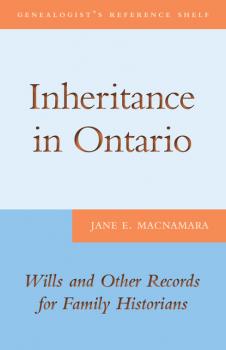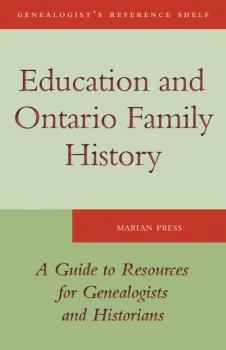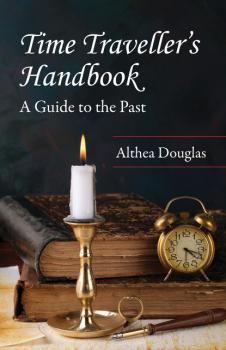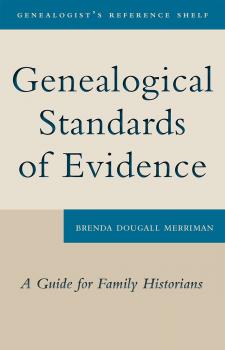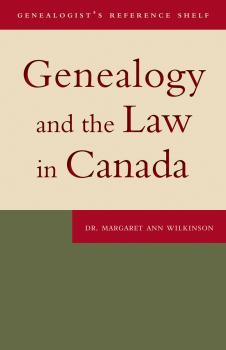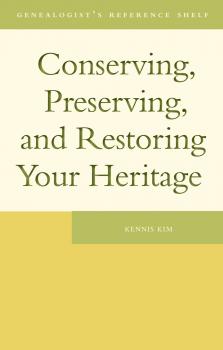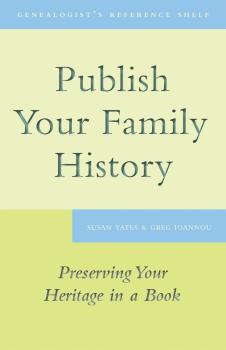ТОП просматриваемых книг сайта:
Genealogist's Reference Shelf
Скачать книги из серии Genealogist's Reference ShelfАннотация
A guide to researching your family’s inheritance history in Ontario. Whether your ancestor left hundreds of acres of land, money, or a few modest belongings, the records created when those legacies were distributed can provide valuable clues to family connections, relationships, and just how your ancestors lived. Inheritance in Ontario will help you determine whether your relative’s will was proved in the Court of Probate, surrogate courts, or another court, and navigate the finding aids to locate surviving estate files and other complementary records at the Archives of Ontario, local courthouse or archives, or through FamilySearch.org . Not every Ontario estate was handled by a court, however, and land records, newspapers, and manuscript collections can also help you discover «who got what.»
Аннотация
Not only professional soldiers but also citizens serving as militiamen participated in the War of 1812. The militia’s contribution to the War of 1812 is not well understood. Even now, 200 years later, we don’t know how many Upper Canadian militia men died defending their home. York’s Sacrifice profiles 39 men who lost their lives during the war. They include 19 residents of the Town of York, five residents of York County, and 11 residents of Halton, Peel, and Wentworth Counties. Where possible, biographies include information about each man’s origin, residence, occupation, civic life, family, militia service, and circumstances of death. A section on records provides detailed guidance in finding and using records from the period to trace an ancestors militia service and life in this difficult time period. A complete list of men who served in the three York regiments during the war identifies those who were killed, injured, captured, or deserted.
Информация о книге
Автор произведения Janice Nickerson
Researching Your Irish Ancestors at Home and Abroad - David R. Elliott
Genealogist's Reference ShelfАннотация
A one-stop guide for people seeking information about their ancestors in Ireland. This book will help all those, no matter where they live, who are searching for ancestors in Ireland. David R. Elliott has taken eight research trips to Ireland on behalf of his clients and has worked in most archival repositories in the Republic of Ireland and Northern Ireland. Dr. Elliott gives clues to finding your ancestral county, then the parish and townland within the county. He explains how Irish archival centres work and describes how you can flesh out your ancestors lives and what you might find in cemeteries. An experienced genealogist and seasoned traveller, Dr. Elliott gives practical advice on preparing for your trip with tips on travel, driving, accommodation, and meals. Ireland’s unique history is outlined, as well as the impact that religion and politics have had on genealogical research. An annotated bibliography and a review of important websites round out this illustrated guide.
Аннотация
Many family researchers with Ontario roots discover they have ancestors who were teachers. Those with no teachers in the family may have ancestors who were part of the Ontario education system as students. Today there are numerous varied resources available to find information on teachers, pupils, schools, textbooks, and curricula in historical Ontario. Education and Ontario Family History outlines the resources available for education from about 1785 to the early twentieth century, not only for genealogists, but also for other historians with an interest in educational records. Many historical resources are currently being digitized, and Ontario and education are no exceptions. These electronic repositories are examined in author Marian Press's book along with traditional paper and archival sources.
Аннотация
Do you know how long it took to sail across the Atlantic Ocean? Was it faster from east to west or west to east? Imagine sailing to India, a five-month trip around the Cape of Good Hope! No wonder late Victorians valued the steamship and the Suez Canal. What difference did the inventions of the telephone or steam engine make to our ancestors lives? Do you know what a rod or a chain is and what they measured? Time Travellers Handbook considers documents and how to look at papers and artifacts that have survived over the years, as well as those family legends and mythinformation handed down by word of mouth. This sort of information can be found on the Internet somewhere but the researcher can waste a lot of time hunting for it. In an entertaining yet useful manner, Time Travellers Handbook brings together for family historians a lot of facts our ancestors once knew, took for granted, and used regularly.
Аннотация
Beginning in Canadas earliest days, our ancestors were required to perform some form of military service, often as militia. The discovery that an ancestor served during one of the major conflicts in our history is exciting. When you find a family name on a Loyalist muster roll, a Canada General Service Medal with an ancestors name engraved on it, a set of First World War attestation papers, or a box of Second World War medals, you realize that one of your ancestors faced challenging events beyond the scope of ordinary living. There are ways to trace their journeys and thus flesh out a more complete story of the history of your family. A Call to the Colours provides the archival, library, and computer resources that can be employed to explore your familys military history, using items such as old photographs, documents, uniforms, medals, and other militaria to guide the search. The book is generously illustrated with examples of the sorts of artifacts and documents you can find.
Аннотация
Genealogical evidence is the information that allows us to identify an individual, an event in his or her life, or the relationship between individuals. In such a process, we often hear or use words such as evidence, proof, or documentation. Brenda Dougall Merriman takes readers through the genealogical process of research and identification, along the way examining how the genealogical community has developed standards of evidence and documentation, what those standards are, and how they can be applied. As a supplement to courses, workshops, and seminars, this book provides both an in-depth and inexpensive reference, perfect for compiling and checking research notes.
Аннотация
Digital records and broad access to the Internet have made it easier for genealogists to gather relevant information from distant sources and to share the information they have gathered. The law, however, remains tied to particular geographic locations. This book discusses how specific laws – access to information, personal data protection, libel, copyright, and regulation of cemeteries – apply to anyone involved in genealogical research in Canada.
Аннотация
Artifacts, whether found in museums, our community, or our homes, offer glimpses into the past. Be they documents, photographs, books, or clothing, as custodians of our history, we're faced with how to maintain these items. Professional conservator Kennis Kim tells us how. Topics discussed include: creating an accession list; the nature of conservation, restoration, and preservation; deciding on display, storage, or using the artifact; common threats such as light, humidity, insects, and rodents; and when to call a professional. Here is all that's needed to determine what can be done to preserve precious articles for future generations.
Аннотация
Many people want to write a family history, but few ever take on the job of publishing one. If you’ve done the research, and you want to make a book from it, then Publish Your Family History is for you. It will tell you all the fundamentals of book production, together with the important details that distinguish a home-published book from a homemade one. You’ll learn: how to get your manuscript ready for production; design ideas for the pages and the cover; methods of making pages with or without a computer and printing those pages quickly and inexpensively; and ideas on bindings that last and look great. Even if time is at a premium, you’re not comfortable with computer technology, or the budget is tight, you’ll learn how to publish a professional-looking family history of your own!

